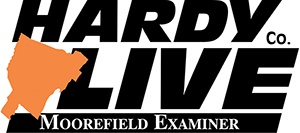WVPA Staff Report
CHARLESTON W.Va. – The first successful kidney transplant surgery in West Virginia was completed on Sept. 29, 1987. With nearly 1,700 transplants performed in the 36 years that have followed, what was once a major procedure is now on the precipice of becoming same-day surgery.
“Thirty five years ago, the surgery was very different,” said Dr. Santosh Nagaraju, kidney transplant surgeon at Charleston Area Medical Center (CAMC). Nagaraju spoke at Charleston’s CAMC General Hospital on Monday, as part of a panel celebrating the recent achievements of CAMC’s “Living Donor Chain” program.

“Everything is done microscopically, so the patient has a very small incision,” Nagaraju explained. “The recovery is very much better compared to what it was. In the past, it used to be a very big incision that sometimes involved cutting out a rib or going through the belly. Recovery time would be three or four weeks. Now we’ve come to a point where we’re thinking about sending people home the same day or the next morning.”
Sharing in Nagaraju’s enthusiasm regarding the nearly four-decades of medical advancements was fellow CAMC transplant surgeon, Dr. Shakir Hussein, who noted that the procedure has been “pinned down” and refined to a “more set sequence.”
“Every now and then we get a surprise and we have to deal with it,” Hussein added. “But for the most part, we know exactly what we have based on the CAT scans and the ultrasounds. We go in with a plan and a roadmap of what we’re going to do. It’s more standard than what it was 30-years-ago.”
Joining the doctors as part of the panel were CAMC Kidney Transplant Center Administrator Alice Jones, and Lead Transplant/Living Donor Coordinator Susan Hanna. Also participating were kidney donor Johanna Holt, and her husband, William Wallace. Although Wallace is the recent recipient of a donated kidney, it was not his wife’s that he received. Through CAMC’s Living Donor Chain program, Wallace received a kidney donated by John Jacobs, a man whom Wallace had not met until the day of the surgery.
To begin the discussion, Jones reiterated to those in attendance that, in 1987, “West Virginia had its first kidney transplant. It was from a living donor; a mother donated to her daughter. Now, 30 years and 1,685 transplants later, we’re making history again in West Virginia – we had our first paired-exchange through the chain (program).”
Holt donated her kidney on Aug. 24. In total, the successful transplant required that six different people – including both Holt and Wallace – undergo kidney surgery. Two days later, Wallace received a healthy kidney donated by Jacobs.
“Going into this, I knew that I was not a match for his blood type,” Holt said. “Ultimately, I wanted to do a paired donation – I knew that would hopefully be our end result. So, you put yourself on the paired donation list, and then you just wait.”
Holt’s kidney was donated to, and saved the life of Alice Henson. Although Henson’s daughter, Jessica, was not a donor-match for her mother, Jessica was a match for Katresa Jacobs. Katresa’s husband, John Jacobs, while not a suitable match for his wife, was able to provide the life-saving organ to Wallace, thus completing the Living Donor Chain.
Wallace began kidney dialysis treatments in Oct. 2022. Some 10 months later, the couple would receive a phone call from Hanna that would change their lives.
“Susan called and asked if that (Living Donor Chain program) was something we were still interested in,” Holt said. “I started doing the testing the next day, and then we were in surgery two weeks later.”
Hanna, Jones, and both surgeons referred to Holt as a “superhero.” This was a sentiment shared by Wallce, who referred to his wife as being simply “amazing.”
Kidney donations can be made from both living and deceased donors. However, according to a 2014 study conducted by Nephro-Urology Monthly at the request of the National Institute of Health, donations made by living donors statistically result in more favorable long-term results.
Hanna, who is tasked with connecting the dots to potentially pair viable transfer candidates, explained that, “A living donor is obviously the best option as far as quality of the kidney. If somebody has a living donor, that patient is taken off the waiting list to allow somebody who may not have a living donor the option of a deceased donor.”
Holt believes that everyone should have the option of a living donor.
“I was super happy that we were going to get a kidney for him (Wallace), and I felt blessed that I was going to be able to help somebody else,” Holt said. “As much as you’re concerned for your loved one, there’s just as much concern for that other family.”
“I lost my mother a year ago, and I lost my brother a couple of weeks before this happened,” Holt added. “I also felt like I was able to donate to somebody else’s mother so they didn’t have to go through the loss that I did. I feel like that’s another dynamic of this journey for us.”
For those wishing to learn more about CAMC’s Living Donor Chain program, or for additional information about becoming a donor, contact Susan Hanna at 304-308-7823, or visit camc.org






